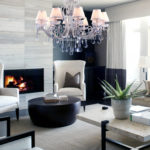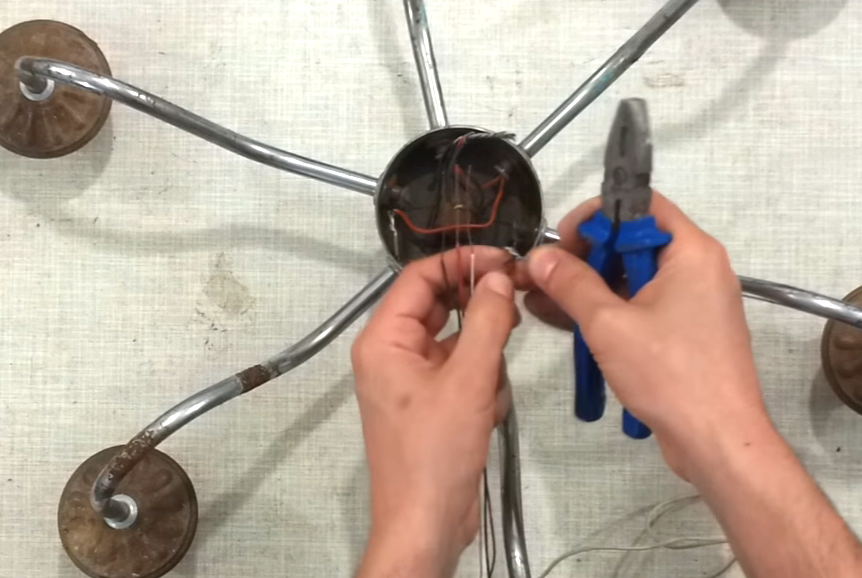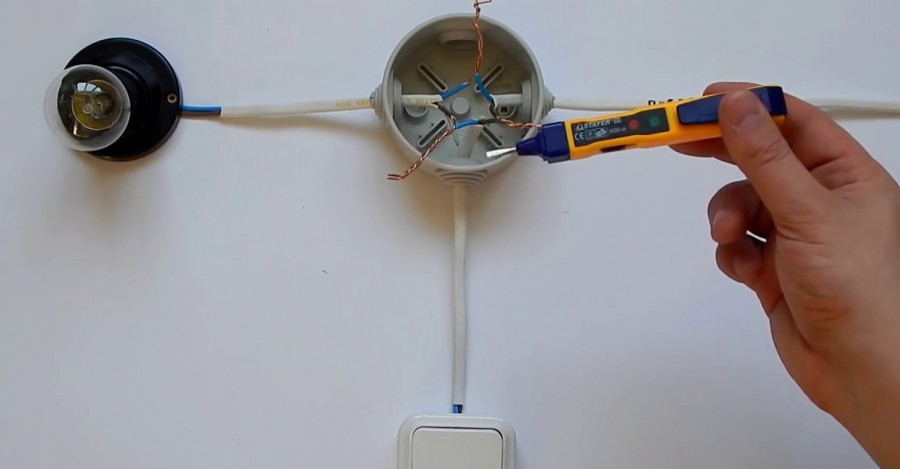What are chandeliers and lampshades: types and features
In the times of knights and kings, the halls were illuminated with the help of weighty “wheels”, on which numerous candles were placed. These medieval manifestations of engineering genius were always suspended - there was no other way, because the candles stubbornly refused to light up and go out at the snap of a finger, and they had to be changed often.
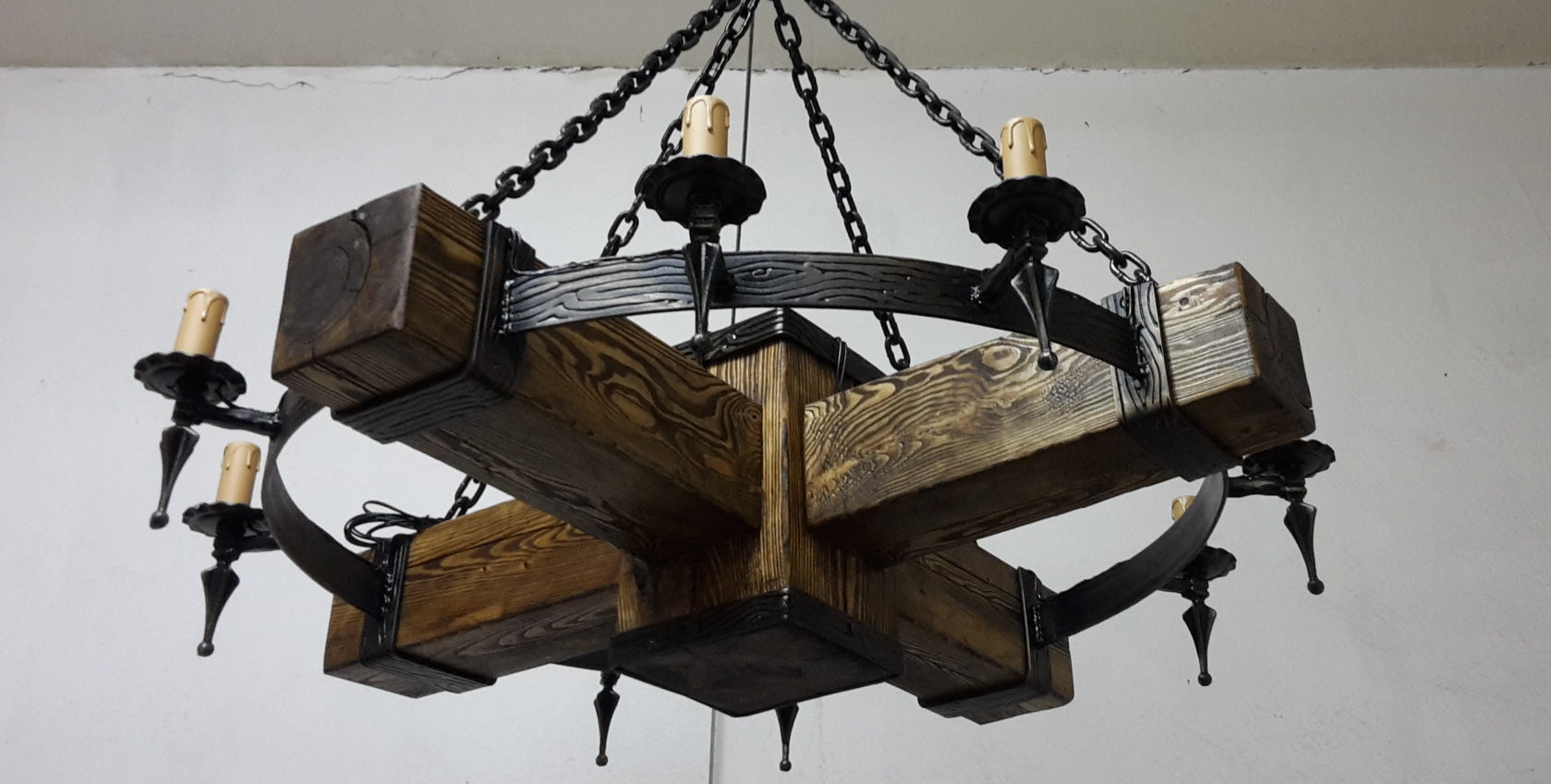
But then the time came for industrialization, the knights rode iron horses, and electric light bulbs appeared in their houses. The chandeliers have also changed. Moreover, many of them have moved so far away from their medieval predecessors that some have ceased to fit into the definition of “suspended ceiling lamp for shadowless room lighting.” Therefore, even most designers will not be able to quickly list what types of chandeliers there are. But I will try.
The content of the article
Types of chandeliers by type of design
To avoid confusion, I’ll make a reservation right away: any chandelier is a ceiling lamp, but the opposite statement will be incorrect. So if you come across a story about built-in “chandeliers”, run away from the adviser without looking, he won’t be able to suggest anything sensible. Why? Yes, it’s simple: the heroine of our article can only be suspended, ceiling or cascade. But it is never built-in - this is the lot of lamps.
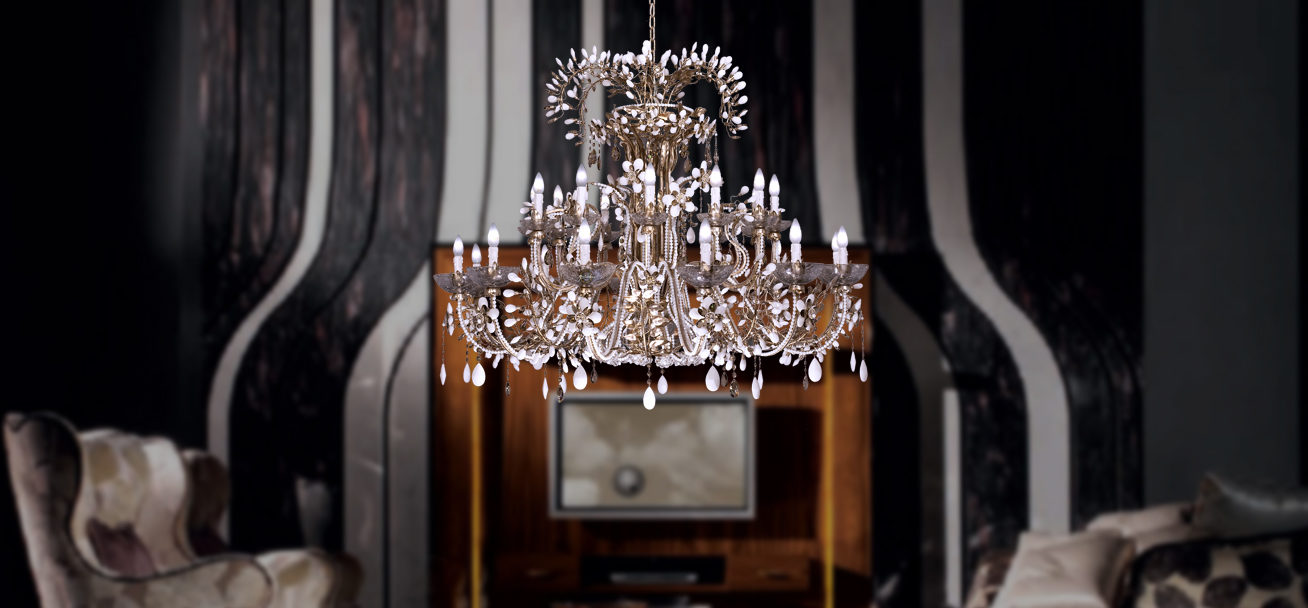
Hanging
All representatives of this species have only one thing in common - a suspension that is attached to a hook built into the ceiling. Classically, its role is played by chains or pipes, but the imagination of a talented designer can easily replace them with ropes, wires, springs and even simple wire.
The main task of the suspension is to securely hold the frame with shades on the hook. Well, if this very hook is not planned to be shown to everyone, then a decorative skirt is put on the suspension, which hides the unsightly connection of wires and the place where the chandelier is attached to the ceiling.
The variety of options for designing a frame with shades can be described almost endlessly. Therefore, I will not do this, noting only that hanging chandeliers are appropriate in almost any interior. But under one condition: the shape and color of the fittings must match the chosen design style of the room.

Cascade
If we describe them very simply, then cascading chandeliers can be called a group of lampshades, each of which has its own suspension. Light sources are usually located at different levels, which is where the name came from.
Cascade chandeliers are almost never cheap, since each of them is unique. Partially, uniqueness is achieved thanks to design features, but much more it depends on the skill of the specialists involved in installing the structure. Here, a simple “come and hitch” will not work.
A cascading chandelier very rarely fits into the interior of rooms with low ceilings or a small area. But they have no competitors when decorating spacious rooms with high arches.
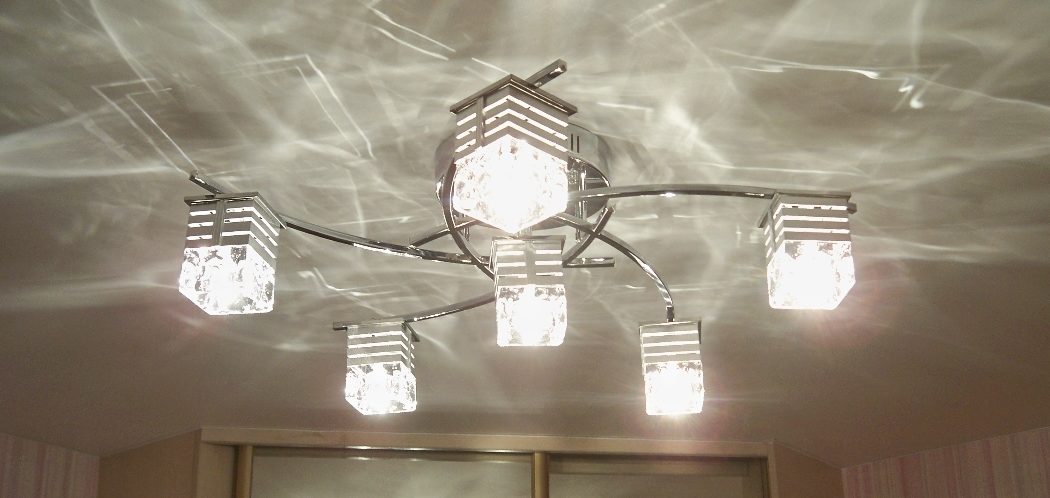
Ceiling (overhead)
Have you ever seen a lampshade “stuck” to the ceiling? This is a ceiling chandelier, which is sometimes also called an overhead chandelier. Its main difference from the previously mentioned recessed lamp is that the base is not hidden in the ceiling, but is located under it. Like the sockets attached to the frame into which the light bulbs are screwed.
Among the advantages of overhead chandeliers are practicality, comparative cheapness and compactness. The latter, by the way, is an important argument when choosing a lamp for rooms with low ceilings.
What types of shades are there for chandeliers?
The shape of the frame and the features of the lampshade allow us to attribute the chandelier to a certain style, of which there are 76. I will not describe the characteristic features of each of them - such a volume of information in one article would be blasphemy. But I can tell you about the design of the lampshades, fortunately there are only two types - open and closed.
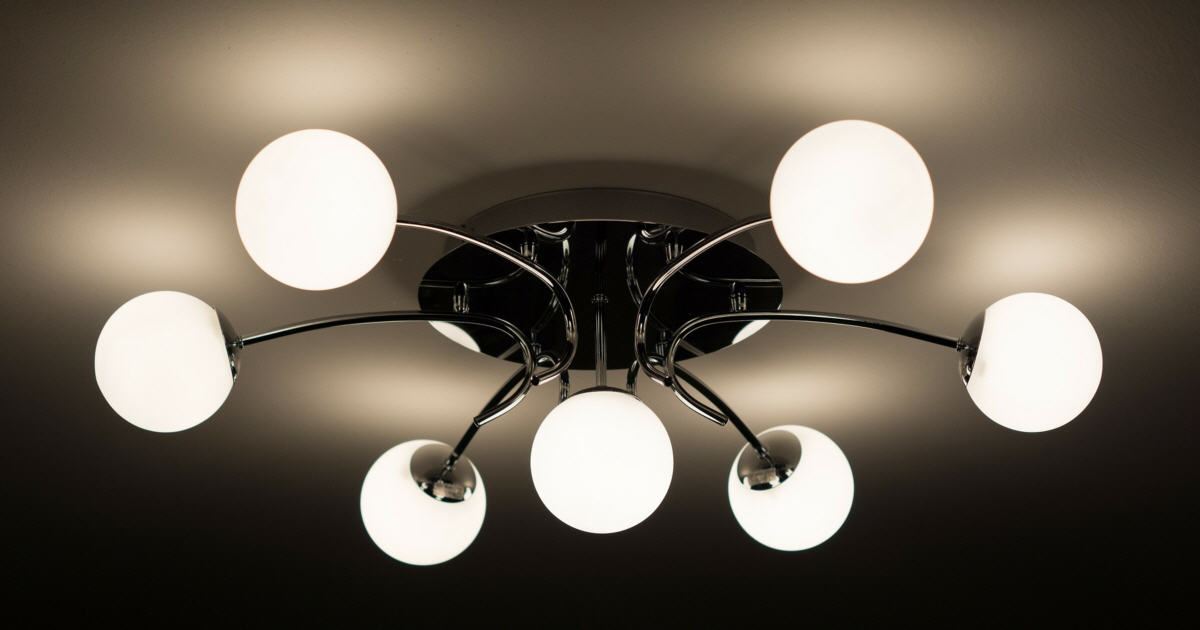
Closed shades
This option produces soft diffused light, blocking its source from the view of the observer. Closed shades are usually made of glass or heat-resistant plastic. In this case, the material can be transparent, matte white or colored.
Contrary to popular misconception, closed lampshades are not always a kind of monolithic bulbs - sometimes they consist of many “petals” that reflect and evenly scatter light. A clear confirmation of my words is the iconic Artichoke: no matter where you look at it, you still won’t see the light bulb.
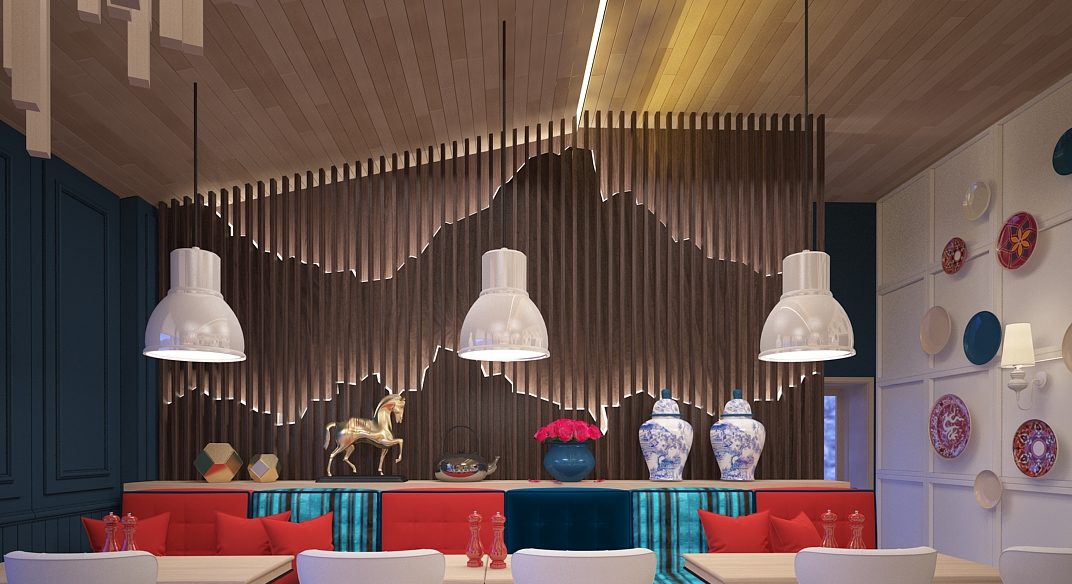
Open shades
These include everything that does not block the light source on at least one side. The shape of open lampshades can be very diverse, which is why they are increasingly divided into:
- lampshades (no, I was not mistaken) - diffusers made of glass and plastic;
- lampshades - cones, cylinders, balls and similar figures made of fabric, paper, artificial leather or wicker;
- reflectors - light-proof models mainly made of metal, facilitating the formation of a directed beam;
- pendants are various small decorative elements that are attached to the frame independently of each other.

This classification is conditional and its main purpose is to differentiate open lampshades according to the type of materials used and design features. It is for this reason that a lampshade or reflector is often called a shade (which is correct) or vice versa (which is incorrect).
And this, in turn, only makes it difficult to navigate the variety of types of chandeliers, which makes it difficult to find the one that you would like to “settle” in your home. You agree with me?



